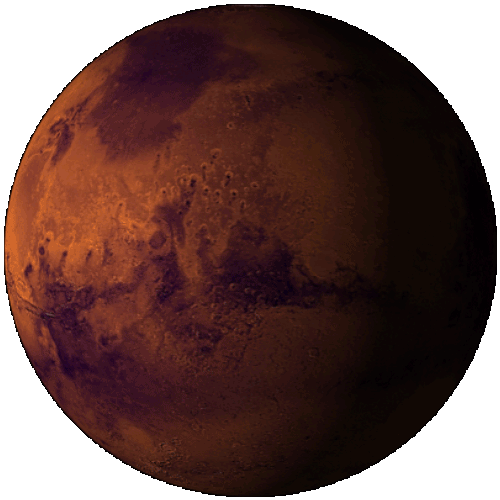Mars

Satellites
- Deimos
- Phobos
- Radius: 4,222 miles
- Distance To Sun: 141,700,000 miles
- Mass: 6.4171×1023 kg
- Age: 4.54 billion years
- Surface Area: 196.9 million sq miles
- Human Population: 7.125 billion (2013) World Bank
Mars
Mars is the fourth planet from the Sun and the second-smallest planet in the Solar System after Mercury.
In English, Mars carries a name of the Roman god of war, and is often referred to as the "Red Planet" because the reddish iron oxide prevalent on its surface gives it a reddish appearance that is distinctive among the astronomical bodies visible to the naked eye. Mars is a terrestrial planet with a thin atmosphere, having surface features reminiscent both of the impact craters of the Moon and the valleys, deserts, and polar ice caps of Earth.
The rotational period and seasonal cycles of Mars are likewise similar to those of Earth,
as is the tilt that produces the seasons. Mars is the site of Olympus Mons, the largest volcano and second-highest known mountain in the Solar System, and of Valles Marineris, one of the largest canyons in the Solar System. The smooth Borealis basin in the northern hemisphere covers 40% of the planet and may be a giant impact feature. Mars has two moons, Phobos and Deimos, which are small and irregularly shaped. These may be captured asteroids, similar to 5261 Eureka, a Mars trojan.
Mars' Moon


Deimos
Phobos
The two moons of Mars are Phobos and Deimos.
Both moons were discovered in August 1877 by Asaph Hall[2] and are named after the characters Phobos (panic/fear) and Deimos (terror/dread) who, in Greek mythology, accompanied their father Ares, god of war, into battle. Ares was known as Mars to the Romans.



